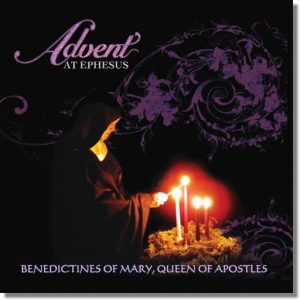
Not far from the ancient city of Ephesus is a small stone building traditionally known by Christians and Muslims as the “house of Mary.” Since the 19th century, the building has been maintained as a shrine to the Virgin Mother of Jesus.
About 5,900 miles away — an hour’s drive north of Kansas City, Missouri — is the site of the Priory of Our Lady of Ephesus. It is the home of the small community of the Benedictines of Mary, Queen of Apostles. The sisters living, working, praying, and singing there recognize a connection between their vocation and the house of Mary As their website explains:
This little home is the very inspiration for our own house of prayer, the Priory of Our Lady of Ephesus. Its very obscurity remains an inspiration to us. It is that little house that served as a powerhouse of prayer to the infant Church. Though little is written of it, we do know that St. Paul wrote in the final lines of his first Epistle to the Corinthians that he would “tarry at Ephesus,” which he did for two years. His stay occurred at a decisive moment in the formative years of the Church. When he wrote his Epistle to the Ephesians, he addressed them as the “fellow citizens of the saints of God,” (Eph. 2:19) and that, in all probability, he visited the Mother of God to receive encouragement and strength as he went out again, on fire to spread the Word of God. Most scripture scholars agree that St. Luke, also venerated at Ephesus, must have received the Infancy narratives first-hand from Our Lady. Since the Evangelist was baptized by Paul, after the Apostles had fled Jerusalem, it must be deduced that he also sought her out at Ephesus, perhaps en route to his See at Antioch. Independent of the “eyewitness account theory,” many other Scripture scholars have projected the Gospel’s authorship as having been undertaken within the ancient city.
Gathering together eight times a day to chant the Divine Office, the sisters do a lot of singing. In the traditional monastic manner, they sing psalms and hymns antiphonally, “back and forth from one side of the oratory to the other” thereby imitating “the choirs of angels in heaven, in their incessant praise.” Hearing them sing, it is clear that they are singing with each other, not at each other.

The sisters share some of their singing with the world by selling CDs and digital music tracks to support the life of their community. Some of the music on these recordings is taken from traditional sources, while some of it is arranged by their abbess Mother Cecilia. Among the CDs are albums devoted to the music of Lent, Easter, Christmas, and Advent. This latter recording — called simply Advent at Ephesus — was their first, and it won the sisters a measure of worldly fame (which they ignored) as it climbed to the top of the Billboard charts. In 2012 and 2013, the sisters were named Billboard’s top Classical Traditional Artists, the first order of nuns to win an award in Billboard’s history.
Here’s the video the sisters produced to publicize that first CD:
Advent at Ephesus has 16 tracks; all of the singing is a cappella, some in unison plainchant, some in three- and four-part harmony. These are not professionally trained singers, but they are singers who have a lot of experience singing with each other and who are committed to beautiful lives loving one another — which, I dare say, is not always true of professional singers.
Not surprisingly, there are more references to the Virgin Mary than is usually evident on Advent collections. At least three tracks are musical accounts of the Annunciation, including this traditional Basque carol, often cited as Gabriel’s Message.
The most familiar Advent hymn on this recording is O come, O come, Emmanuel. There is a Marian connection with this hymn as well, one that the sisters surely know. The hymn is based on a series of seven “O antiphons,” short refrains chanted before and after the singing of the Magnificat, Mary’s response to her knowledge of the role she was to play in the coming of Christ into the world. The O antiphons are traditionally sung in the week leading up to Christmas (more on these in a post later this week).
Advent at Ephesus is available in different formats from different vendors, but I suggest you buy it from the Priory’s website, as the sisters will probably see a greater portion of the profits that way. And while you’re at it, you can order recordings for other seasons in the Church’s life.
In the spring of 2014, CBS Sunday Morning televised a report about the Benedictines of Mary, Queen of Apostles. It described how their music making fits into their prayerful way of life.